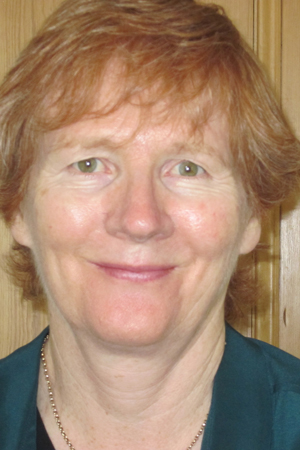Women and Love
 Publishing as an industry is obsessed with new – books yet to come out… but what about the brilliant books that have already been published? Each month we spotlight a different author whose book was published more than a year ago, which you might be yet to meet… This month we hear from Miriam Burke about the brilliant Women and Love…
Publishing as an industry is obsessed with new – books yet to come out… but what about the brilliant books that have already been published? Each month we spotlight a different author whose book was published more than a year ago, which you might be yet to meet… This month we hear from Miriam Burke about the brilliant Women and Love…

Shuffling the Shelves: Women and Love by Miriam Burke

 What is your collection Women and Love about?
What is your collection Women and Love about?
The stories in my collection are about women from very diverse backgrounds, and the stories examine how the women deal with the challenges of many different kinds of love. Who we love, and how we love, probably reveals more about us than anything else we do. Love can greatly enrich and enhance our lives, and it can also destroy us. Love can be a very powerful drug.
A short story collection is a good genre for portraying a society or a culture because you’re not restricted in the number of characters or settings.
Why does Covid feature in some of the stories?
I wrote many of the stories in the collection during Covid, and it was such an intense and strange experience, it would have been odd not to include some stories about it. I think many people found themselves looking back and evaluating their lives during the pandemic because we believed we could die if infected, and one story had two friends looking back on their lives. Unlikely connections were made during Covid between people from very different backgrounds, and one story in the collection is about two women with very different lives connecting in a supermarket.
Are you inspired by real-life stories or are most of the tales purely imagination?
I didn’t come to live in the UK until I was in my twenties, so I’m an outsider – and that gives you an interesting perspective on a culture. I grew up in the west of Ireland when it was culturally very monochromatic, and I was fascinated by the cultural and social diversity of London. I worked for many years as a clinical psychologist in hospitals and GP practices in London, and that experience gave me insight into what life is like for people from very diverse backgrounds. I would, of course, never write about anyone I saw as a clinician, but learning about the context of peoples’ lives was helpful for me as a writer. I wanted the collection to celebrate the great richness of a culturally and socially diverse city.
Is music an important part of your life, and writing process? And what would be your playlist for the book?
I love music but I’m not, unfortunately, very musical, and I don’t listen to music when I’m writing; I’d find it distracting. My playlist for the book would be as follows:
- The love duets between two women in Der Resenkavalier, because they celebrate the love between women.
- ‘Streets of London’ by Ralph McTell, because he asks listeners to look around them at the other people with whom they share the streets.
- ‘My Own Dear Galway Bay’ sung by Dolores Keane, because it’s a powerful expression of the immigrant’s longing for home.
- ‘We Shall Overcome’ sung by Joan Baez, because it provides hope that the backlash against immigrants and the LGBTQIA+ community will someday be overcome.
- ‘First We Take Manhattan’ sung by Leonard Cohen, because I love the idea of taking Manhattan, especially given the current political situation in the US.
Was it important to you to represent a broad range of characters across the LGBTQIA+ umbrella or did it form naturally?
The collection includes a wide range of LGBTQIA+ characters, and some stories are about straight characters because I think it’s important not to have segregation in literature. Straight readers should read about LGBTQIA+ lives and LGBTQIA+ readers should read about the lives of straight people. Reading about the lives of people very different from you can make you more empathic towards them, and the experience can challenge prejudices. Different groups within the LGBTQIA+ community can have very little contact with each other, and reading about each other’s experience can help foster solidarity.
Religion seems to seep in at the edges of the stories, can you speak to this?
I went to a convent boarding school where we went to Mass every morning, had Benediction every evening, and were read the lives of the saints during meals. It was also full of petty-bourgeois snobbery. I became an atheist and a socialist; some of my class mates became nuns. One advantage of a religious education is that you are trained to think ethically; you develop a heightened moral awareness. You might reject the doctrine of the church you were brought up in, but you are still left with a heightened ethical awareness. And I think moral awareness helps us to behave like decent human beings, and to feel some responsibility when others are being unjustly treated. There are, of course, other ways of helping children develop ethical awareness.
Is there something about the geography of London that inspired the collection?
I’m a great walker, and I love how the buildings in a city tell the history of the city. I’m fascinated by the distinctive character of the different neighbourhoods in London, and I do find it inspiring.
What do you want the reader to be left thinking about at the end of the stories?
I’d like the reader to marvel at the richness of contemporary life in Britain, and to be aware that much of the richness is an outcome of immigration. And I’d like the stories to imbue a sense of wonder at the complexity and unpredictability of humans.
– Miriam Burke, May 2025


Women and Love
£10.00
BUY NOW
‘I couldn’t sleep that night; our conversation was like a trapped bird flying around inside my head. The next morning, I texted to say I wouldn’t be coming back. I lied about having to return to my country to nurse a sick relative. I couldn’t bear to see my story mirrored in his eyes, and to see what we never had. I knew he’d understand.’
Women and Love is a thought-provoking collection of seventeen tightly woven tales about the power of love, all its trials and complications, and the shattered lives it can leave in its wake.
The stories explore a huge variety of sorts of love surrounding women in wildly differing settings, and features an unforgettable cast including GPs, burglars, inmates, emigrant cleaners, carers, young professionals, and many more. Navigating heavy themes, with a particular focus on LGBTQ+ experiences, including gender dysphoria and searching for a sperm donor, the stories leave the reader burning with indignation, full of empathy and wonder.


e-book available*

Up next…
We asked Miriam to choose the next book to join the shuffled shelves, so join us here to find out more about The Green Indian Problem.
Miriam said:
The Green Indian Problem is a brilliant portrayal of the inner world of a child who is trapped in the wrong body. The child’s voice is utterly convincing and very compelling, the culture and community where the child is growing up are very skilfully drawn, and there’s a subtle humour underlying the writing that make the book a very enjoyable read. The novel is beautifully written and extremely well crafted, and I think it should be on the school curriculum.













